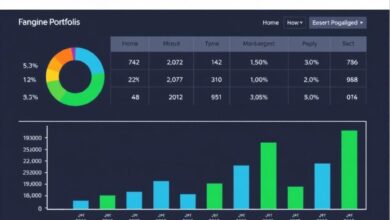How to avoid lifestyle inflation and keep saving more

Focus on cultivating habits that prioritize long-term financial health over immediate gratification. When you receive an income increase, resist the urge to proportionally elevate your expenses. Instead, allocate a significant portion of those extra funds toward enhancing your savings or investing in opportunities that offer substantial returns.
Track your spending meticulously and identify areas where you can cut back without sacrificing your quality of life. This proactive approach allows you to maintain your current living standards while redirecting additional resources towards building wealth. Consider setting strict limits on discretionary spending and automate transfers to savings accounts, ensuring that your financial goals remain at the forefront of your priorities.
By establishing a clear budget and adhering to it, you’ll create a framework that supports sustained growth in your savings. Regularly review and adjust your financial plan as necessary, keeping inflationary tendencies in check. Remember, the key is not merely to increase income but to strategically manage how much of that income translates into meaningful long-term benefits.
Recognizing Lifestyle Inflation Triggers
Identify specific moments when an increase in income leads to a rise in spending. Common triggers include promotions, job changes, or windfalls such as bonuses or inheritance. A sudden boost in earnings can create a psychological shift, prompting individuals to elevate their standard of living.
Monitor expenses closely post-income increase. Analyze spending patterns that emerge during this period. For example, dining out more frequently or upgrading to luxury brands can subtly inflate your financial obligations. Recognizing these habits early allows for more strategic decision-making.
Adopt a wealth mindset by prioritizing long-term financial goals over immediate gratification. Shift focus from acquiring material possessions to investing in experiences and future security. This perspective fosters discipline and helps resist the urge to indulge in unnecessary expenditures.
Set clear boundaries on discretionary spending tied to income increases. Create a budget that allocates only a small percentage of additional earnings towards lifestyle enhancements while directing the majority into savings or investments. This approach not only curbs overspending but also reinforces financial stability.
Regularly review financial progress and adjust goals as needed. Celebrate milestones without resorting to lavish celebrations that can trigger excessive spending. Small rewards can maintain motivation without jeopardizing overall fiscal health.
Setting Clear Financial Goals
Establish specific, measurable targets for your finances. For instance, if you receive an income increase, allocate a percentage directly to savings rather than allowing it to inflate your expenses. Set a goal such as saving 20% of any salary bump within the next month.
Create short-term and long-term objectives. Short-term goals could include saving for an emergency fund or paying off credit card debt. Long-term aspirations might involve accumulating wealth for retirement or purchasing real estate. Prioritize these goals based on urgency and importance.
Implement the SMART criteria: ensure that your financial goals are Specific, Measurable, Achievable, Relevant, and Time-bound. This structured approach will help maintain focus and motivation over time.
Regularly review progress toward your financial ambitions. Adjust strategies as necessary to stay aligned with your wealth mindset while minimizing unnecessary expenditures.
Consider visualizing your financial journey through charts or spreadsheets. Tracking milestones visually can reinforce commitment to your financial discipline and highlight how small contributions can lead to significant growth over time.
Engage in discussions about financial planning with like-minded individuals or professionals who share similar aspirations. This community can provide support and accountability while reinforcing positive habits that curb excessive spending.
Budgeting for Increased Income
Allocate a fixed percentage of your salary boost to savings before adjusting your spending. A common strategy is the 50/30/20 rule, where 50% goes to needs, 30% to wants, and 20% to savings. With an income increase, consider modifying this ratio to prioritize wealth-building.
- Establish a New Baseline: Adjust your budget based on increased earnings but keep previous spending habits as a reference point.
- Automate Savings: Set up automatic transfers to savings accounts or investment vehicles immediately after payday.
- Review Monthly Expenses: Identify discretionary expenses that can be minimized or eliminated altogether.
Cultivating a wealth mindset is crucial. Reflect on what financial security means personally and how new income can contribute without compromising values. This mindset encourages discipline in spending.
- Create Separate Funds: Establish dedicated funds for goals such as travel, education, or investments. This keeps your financial objectives clear and achievable.
- Track Progress: Regularly review financial statements to ensure you are meeting targets set with the extra income.
- Revisit Goals Annually: Adjust financial aspirations as income grows to maintain alignment with personal desires and lifestyle changes.
The habits formed during periods of increased earnings can have lasting impacts. Engage in consistent budgeting practices, ensuring they remain intact regardless of fluctuating income levels.
- Stay Educated: Invest time in learning about finance and investment opportunities that align with your goals.
- Avoid Impulse Purchases: Implement a waiting period for non-essential items; this allows reflection on necessity versus desire.
This approach not only safeguards against overspending but also enhances overall financial well-being over time. By maintaining control over finances, you create a foundation for enduring prosperity.
Building Sustainable Spending Habits
Track every expense meticulously. Use apps or spreadsheets to categorize spending, ensuring awareness of where money flows. This clarity helps in making informed decisions and identifying areas for reduction.
Implement the 50/30/20 rule: allocate 50% of your income to needs, 30% to wants, and 20% to savings or investments. This approach maintains balance while promoting a wealth mindset.
Embrace a minimalist lifestyle by prioritizing quality over quantity. Invest in items that offer long-term value rather than succumbing to short-lived trends. This shift reduces unnecessary costs and enhances satisfaction.
Create a buffer in your budget for unexpected expenses. Setting aside a small percentage of your income as an emergency fund can prevent financial strain and impulsive spending during unforeseen circumstances.
Limit exposure to social media influences that encourage excessive consumerism. Curate your online feeds to focus on content that inspires mindful spending instead of materialistic desires.
Regularly review subscriptions and memberships; cancel those underutilized. This ensures that you only pay for services that genuinely enhance your life, thereby reducing monthly outflows.
Incorporate delayed gratification into your purchasing habits. Wait at least 48 hours before making non-essential purchases to evaluate their necessity against long-term goals.
Share financial aspirations with close friends or family who support your objectives. Accountability can strengthen commitment to sustainable practices, reinforcing a positive mindset towards wealth accumulation.







